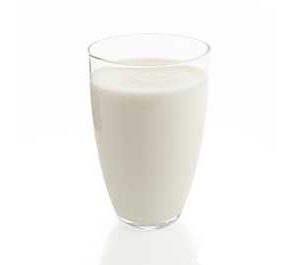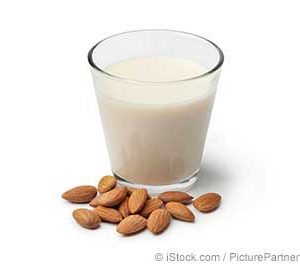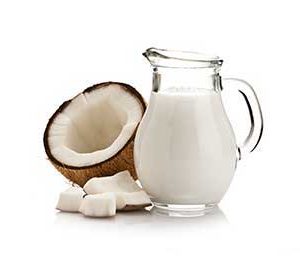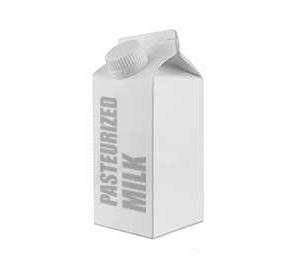If you’re familiar with Indian cuisine, you may have heard of (or possibly tasted) ghee. Ghee has been used in traditional Indian cooking and Ayurvedic medicine for centuries. In fact, the word “ghee” is the Indian term for clarified butter.
Nowadays, grass fed ghee has gained ground in the West as a healthy and tasty alternative to regular butter. It’s a well-loved ingredient among people following a Paleo or ketogenic diet. Read on to learn more about the health benefits of ghee and the various ways to use it in your meals.
What Is Ghee?
Often derived from cow’s milk, ghee may also be made from buffalo or goat milk. It’s made by heating regular butter until the milk solids caramelize and separate from the butterfat and the water in it completely evaporates.
The milk solids are then strained, so you’re left with a pure golden butterfat that has a distinct caramel-like and nutty flavor. This clear liquid is also called clarified butter. The terms ghee and clarified butter are often used interchangeably, but they’re technically not the same. Ghee is simmered a little longer than regular clarified butter, so it has a deeper taste and a darker color. While ghee is a type of clarified butter, not all clarified butter is ghee.
The process of removing milk solids renders ghee lactose-free. It also has a higher smoke point, making it more ideal for high-heat cooking than regular butter. Additionally, ghee has a longer shelf life. You can leave it at room temperature, but putting it inside the refrigerator will extend its shelf life to six months.
Ghee can be used like butter — you can fry with it, use it for baking or spread it on your toast. If your recipe calls for ghee and you do not have this ingredient on hand, you can use regular butter, clarified butter or coconut oil as a substitute.
Ghee vs. Butter: Know the Difference
Compared to butter, ghee has a higher smoke point, longer shelf life, darker color and nuttier flavor. In terms of nutritional content, ghee and butter are the most similar among all edible fats, according to a study published in the Journal of Clinical and Diagnostic Research.
Since their fat content is almost the same, they’re both beneficial if you’re on a high-fat, low-carb diet. However, ghee is preferable if you have lactose intolerance, as it does not contain casein (milk protein) and lactose, which can be hard to digest if you’re sensitive to dairy.
Choosing between regular butter and ghee for your cooking depends on your flavor preferences, your dietary needs and the type of dish that you’re going to make. For foods like meat that require high-heat cooking, ghee is usually a better choice, as it imparts a rich flavor rather than a burned one. For more information about the difference between ghee and butter, check out my article, “Is Ghee Better Than Butter?”
7 Ghee Benefits for Your Health
Ghee is primarily composed of healthy fats. According to the journal ARYA Atherosclerosis, it consists of 65% saturated fatty acids (SFAs) and 33% monounsaturated fatty acids (MUFAs). It also contains amino acids and fat-soluble vitamins A and K. These nutrients contribute to the following health benefits of ghee:
- May help reduce inflammation— Ghee contains butyric acid, a short-chain fatty acid that may help provide anti-inflammatory properties, making it useful for managing inflammatory-related conditions like irritable bowel syndrome.
- Aids in weight loss —Ghee contains medium-chain triglycerides (MCT), which have been found to support weight loss through energy expenditure and lipid oxidation. According to a 2015 study published in the Journal of the Academy of Nutrition and Dietetics, replacing long-chain triglycerides with MCT in a diet may help reduce body weight and composition without affecting lipid profiles.
- Helps promote heart health —Despite being implicated in the increased prevalence of coronary artery diseases in India, studies show that ghee actually has a number of benefits for cardiovascular health. An analysis of several studies published in the journal AYU states that ghee has been found to help decrease serum cholesterol and triglyceride levels.
Meanwhile, a different study published in the journal ARYA Atherosclerosis shows that the addition of ghee to your diet may help significantly reduce the fatty streak formation in your left and right coronary arteries while increasing beneficial HDL cholesterol levels.
- May help lower the risk for cancer — Butyric acid provides cancer-fighting properties by inhibiting the growth of cancer cells, stimulating autophagy and inducing apoptotic cell death.Ghee also contains conjugated linoleic acid (CLA), which is a powerful anticarcinogen. Plus, it has less acrylamide compared to other oils. Acrylamide is a chemical compound that becomes toxic under heat and has been linked to cancer in animal studies.
- Helps enhance your mitochondrial function —According to a 2018 study published in PLOS ONE, MCT may help improve mitochondrial function by activating the Akt and AMPK signaling pathways and downregulating the cytokine signaling pathway that are responsible for increased reactive oxygen species and decreased mitochondrial membrane potential.
- Helps increase exercise endurance —A study shows that MCT may help improve exercise performance under high temperature conditions by increasing mitochondrial biogenesis and metabolism.
- May help lower the risk for Type 2 diabetes —A 2009 study published in the journal Diabetes showed that butyric acid may help improve insulin sensitivity, which in turn lowers the risk for Type 2 diabetes.
What Are the Other Uses of Ghee?
Aside from adding ghee to your meals, you can also use it topically for:
- Inflammatory skin conditions —A study published in the Indian Journal of Surgery found that a dressing made with honey and ghee may have potential to heal infected wounds.
- Dry skin —Ghee provides excellent moisturizing properties. Make a paste with ghee, turmeric and sandalwood powder and rub it all over your skin. Wash it off after several minutes.
- Frizzy or dry hair —To get rid of dry hair, massage your scalp with a mixture of honey and ghee, and leave it on for a while. Wash out the mixture afterward.
Ghee Nutrition Facts
If you want to know the amount of calories, fats and other nutrients ghee has for every serving of 100 grams, check out the nutrition facts table below:
| Ghee Nutrition Facts
Serving Size: 100 grams |
|
| Amt. Per Serving |
|
| Calories | 876 |
| Total Fat | 99.48 g |
| Saturated Fat | 61.924 g |
| Polyunsaturated Fat | 3.694 g |
| Monounsaturated Fat | 28.732 g |
| Trans Fat | 0 g |
| Cholesterol | 256 mg |
| Sodium | 0 mg |
| Potassium | 5 mg |
| Total Carbohydrates | 0 g |
| Dietary Fiber | 0 g |
| Sugar | 0 g |
| Protein | 0.28 g |
| Vitamin A 840 µg | Calcium 4 mg |
| Vitamin C 0% | Iron 0% |
Know Where Your Ghee Comes From
Whether you bought ghee from the supermarket or you made it yourself, one of the most important things you need to consider is the source of the butter used to make it. Remember, the ghee you eat is only as good as the milk used to make the original butter.
With that in mind, choose ghee made from organic, grass fed milk instead of those produced using milk from concentrated animal feeding operations (CAFOs). Grass fed ghee lowers your risk of exposure to pathogenic bacteria and antibiotic-resistant diseases.
Frequently Asked Questions (FAQs) About Ghee
Q: Where can you buy ghee?
A: Ghee is widely available at groceries and online organic stores.
Q: Is ghee vegan?
A: Even though its milk content is mostly removed, ghee is still derived from an animal product, so it is not suitable for vegans.
Q: Is ghee dairy-free?
A: Yes. The process of removing milk solids when producing ghee makes it dairy-free.
Q: Why is ghee good for you?
A: Ghee is a healthy addition to your diet, as it provides a variety of health-promoting compounds, including healthy fatty acids, amino acids, vitamin A and vitamin K. It’s been found to help improve mitochondrial function, aid in weight loss and reduce the risk for a variety of diseases, including cancer, heart disease and diabetes.
Q: Does ghee need to be refrigerated?
- No. Ghee can be stored at room temperature for up to three months. However, refrigerating it can extend its shelf life for up to six months.
Q: Is ghee Paleo-friendly?
A: Yes. Ghee is a popular food among people who follow a Paleo diet, as it’s a dairy-free alternative to butter.
Q: What does ghee taste like?
A: Ghee has a warm and nutty taste. Its flavor is deeper than that of regular butter.
Q: Is ghee lactose-free?
A: Yes. Ghee does not contain lactose, since all its milk content is removed during the production process.
Q: How long does ghee last?
A: Ghee will last for up to three months when stored in ambient temperature. If placed in the refrigerator, it will last for up to six months.







Reviews
There are no reviews yet.